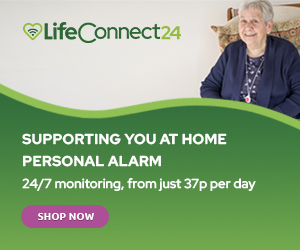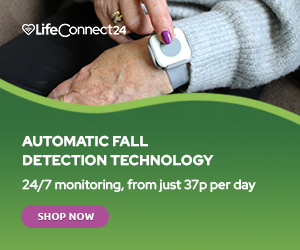As we all know, hearing loss is a common part of the ageing process and it may be that you require a hearing aid at some point in your life. Hearing aids can help you to hear sounds much clearer and louder, without giving you your full hearing back.
Today’s post takes a closer look at some of the hearing aid options that are available. For an overall guide to hearing loss, including the causes and other forms of treatment, please have a read of our in-depth guide.
What is a Hearing Aid?
The hearing aid is a small electronic device which is placed in or around your ear. The device makes sounds louder and therefore clearer to the person wearing the hearing aid. Hearing Aids can therefore help those with poor hearing to communicate better with their loved ones, whether they’re in a quiet or loud environment.
Hearing aids are made up of a microphone, amplifier, and speaker. The device will receive sound through the microphone, which then converts the sound waves to electrical signals and sends them through to the amplifier. It is this part of the device which then increases the power of the signals and sends them to the ear via the speaker.
Hearing aids can only help if you still have some hearing left, so it’s important to get one as soon as you have any hearing concerns. According to the NHS, hearing aids can:
- Help you to hear everyday sounds around you, such as the doorbell or your telephone ringing.
- Help you to understand and hear the people around you, especially those talking directly to you.
- Boost your confidence during conversations – both direct and indirect.
- Help you to enjoy media comfortably again, such as the TV or radio, without having to turn the volume too far up.
The main point of the hearing aid is to make sounds louder and clearer. They won’t be able to make your hearing perfect, but they will certainly make a huge difference.
Types of Hearing Aids
There are multiple hearing aids available to you, with the most common being the behind the ear hearing aids. Let’s take a closer look at your options:
Behind the Ear
This is a small plastic device which is placed behind your ear. The device is attached with a tube to another piece of plastic that fits in your ear, also known as an earmould, or a soft tip which goes into the opening of your ear.
The casing behind your ear contains all the electronic parts of the device. Any sounds travel through to the earmould and into your ear. Behind the ear devices are one of the easiest to use and are suitable for the majority of people who are suffering from hearing loss.
Receiver in the Ear
This type of hearing aid is quite similar to the behind the ear models. The main difference is that the part of the device which goes behind the ear is smaller and connects to the speaker inside the opening of your ear via a thin wire.
This makes them less visible than the behind the ear hearing aids, although they can be a little bit fiddlier to use according to the NHS. Again, these devices are suitable for the majority of people with hearing loss.
In the Ear
These hearing aids fill the area just outside the opening of your ear. Unlike the two models already mentioned, these devices cannot be seen from behind, but they are clearly visible from the side. All of the electronic parts of the hearing aid are stored in the main casing of the device.
In the ear hearing aids are suitable for those with mild to severe hearing loss.
In the Canal
These devices are similar to the previous hearing aids but are slightly smaller and only fill the opening of your ear. This makes them much less visible than all the devices mentioned so far in this post, but they can be a little tricky to use due to their size.
Furthermore, in the canal devices are not recommended for those of you who suffer from severe hearing loss.
Completely in the Canal / Invisible in the Canal
These two types of hearing aids are the smallest options available. They fit further into the opening of your ear than the regular in the canal devices and are therefore barely visible to others. Again though, these devices are hampered by their size.
People may find them too fiddly and some models can only be fitted and taken out by specialists. They are also not suitable for those of you who suffer from severe hearing loss.
CROS / BiCROS
These systems are helpful if you suffer from hearing loss in one ear. They come as a pair and the one that is placed into the affected ear picks up sounds and sends it to the other hearing aid in your good ear.
This clever system can be operated through wireless technology or through a wire around the back of your neck.
Body Worn
These devices are made up of a small box which is connected to earphones. You can clip this box onto your clothes or place it inside a pocket. This type of hearing aid is ideal if you have severe hearing loss or if you find the smaller devices too tricky to use.
Hearing Aids on the NHS
Hearing aids are available on the NHS to anybody that needs them. Getting a hearing aid on the NHS is ideal as all batteries and repairs are free and you don’t have to pay for any follow-up appointments or aftercare. All hearing aids are provided as a long-term loan.
Your doctor can refer you to an NHS hearing aid provider if they think you might need a hearing aid.
Help with Hearing Aids
It can take some time, and plenty of patience, to get to grips with your new device but over time you will be able to learn how to use it. You’ll have follow-up appointments after they’re fitted to check how things are going. However, you should get in touch with your audiologist at any point if you’re having problems.
Some self-care tips for your hearing aid, suggested by the National Institute on Deafness and Other Communication Disorders (NIDCD), include:
- Keeping it away from heat and moisture.
- Cleaning your device as instructed by your audiologist. Earwax and ear drainage can damage your device.
- Avoid using hairspray and other hair care products whilst you have your hearing aid in.
- Always turn your hearing aid off when you’re not using it.
- Replace dead batteries immediately.
There are several hearing loss organisations out there, who can provide help and support with your new hearing aid.
Personal Alarm Information
For more information about our life-saving personal alarm service, please get in touch with our friendly team on 0800 999 0400. Alternatively, complete our contact us form and we will get back to you as soon as possible.
Editor’s Note: This article was updated on 29th November 2021 to reflect current information.



Leave A Comment